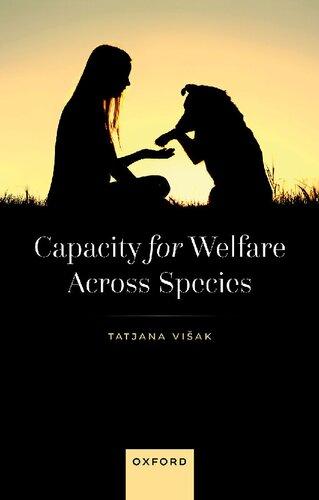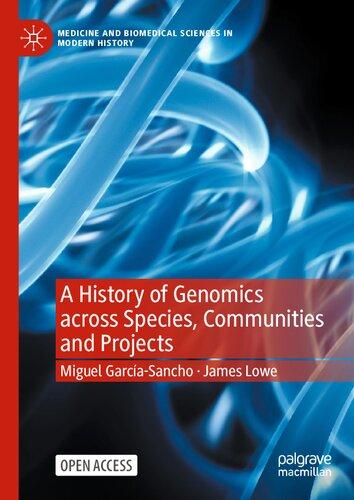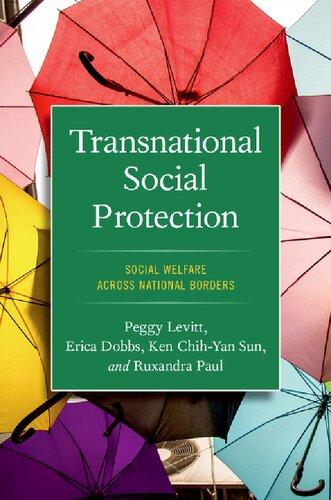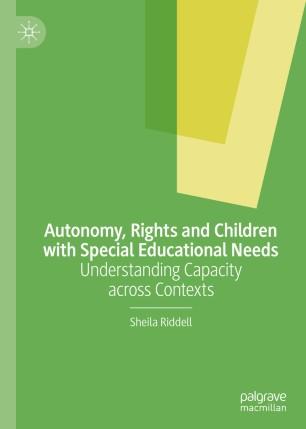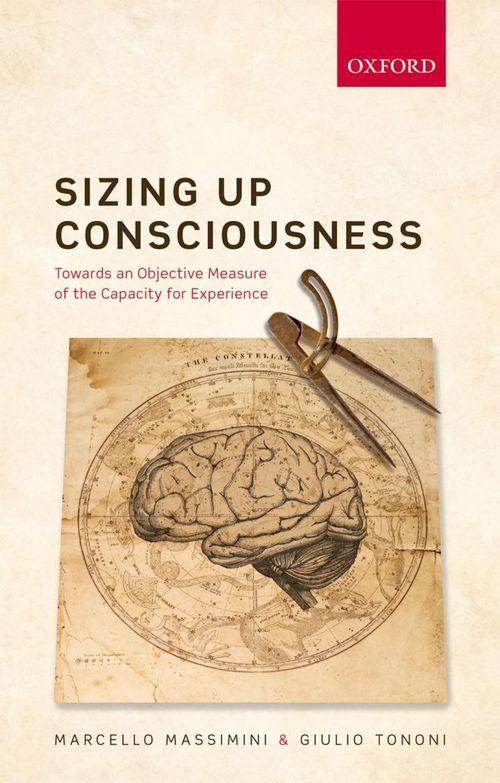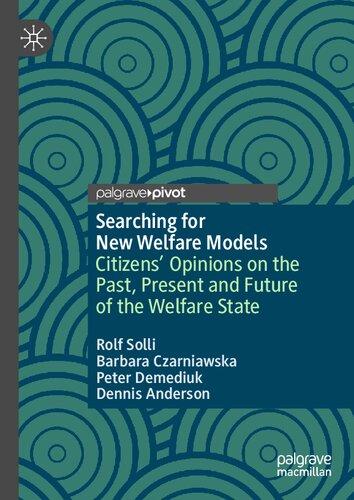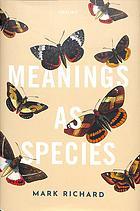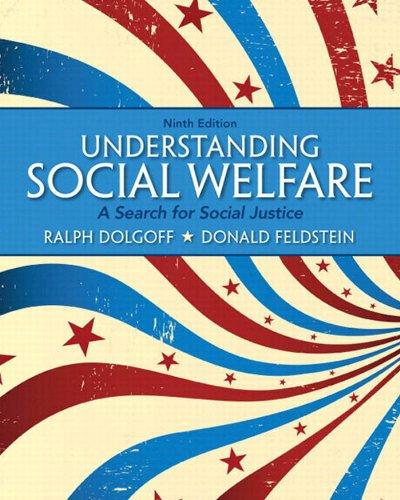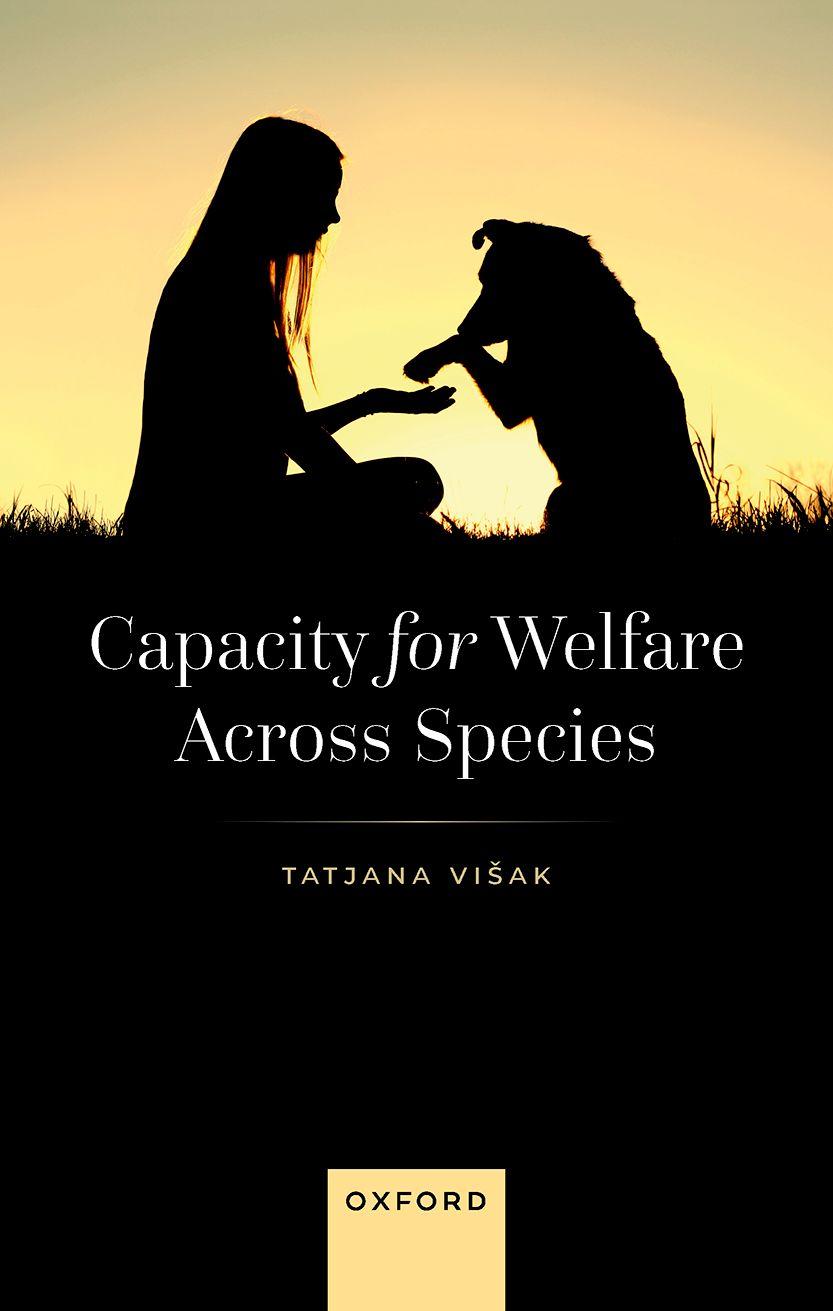1 Introduction
Assessments and comparisons of individuals’ welfare are common in everyday life. We answer questions about how we are doing. We enquire about the welfare of others and do or do not believe the answers that we get. We compare welfare across time. It might, for instance, worry me that, due to some illness, my friend is worse off these days than she was last month. I might, furthermore, wonder whether my dog is better off in my family than he used to be when he was still living in the streets of Romania. We also compare welfare across individuals. For instance, a father’s judgement that his daughter is currently worse off than his son might motivate him to give her some special attention. I might wonder whether my dog, with his playful and carefree life, is better off than I am. The latter would be a comparison of welfare not only across individuals of the same species but across individuals of different species.
This book is mainly concerned with a central question related to crossspecies comparisons of welfare. The book inquires whether welfare subjects of different species have the same rather than a different capacity for welfare. Without an answer to this question, welfare cannot be compared across species. There is currently no agreement and only a little discussion about the important question of cross-species capacity for welfare. Before I further introduce the issue of cross-species capacity for welfare (sections 1.3 to 1.6) and present an outline of this book (section 1.7), I will illustrate the practical relevance of comparisons of welfare across species (section 1.1) and mention some assumptions that underly such comparisons (section 1.2).1
1 Parts of chapters 1.1 and 1.2 are reproduced with permission from Palgrave MacMillan from Višak (2017).
Capacity for Welfare across Species. Tatjana Višak, Oxford University Press. © Tatjana Višak 2022. DOI: 10.1093/oso/9780192882202.003.0001
1.1 Comparisons of Welfare across Species
Comparisons of welfare across species are of practical relevance. They may, and often do, inform considerations of consumers, policymakers, activists, and ethicists. Let me mention a few examples.
Policymakers formulate animal welfare considerations in species-specific rules. Since what one may or may not do to a member of an animal species is supposed to be related to the impact on the welfare of the individual in question, cross-species comparisons seem to be necessary. For instance, in the Netherlands it is legally permitted to take calves but not piglets from their mother immediately after birth. Does this suggest that such a separation is more harmful for piglets than it is for cows? Most probably, the reason for this difference is the economic interest in milking the cow but not the sow. But since such regulations are part of animal welfare legislation, one might justify or question the difference in terms of the animals’ welfare (Bracke 2006).
Likewise, the Dutch decision to ban mink farms on animal welfare grounds may raise the question whether minks are worse off than, for example, hens in cages. Again, other considerations may explain the ban on mink farming, such as the public opinion that fur, as opposed to eggs, is a luxury product. But if a certain treatment is forbidden for one species but not for others in animal welfare legislation, one might justify or question such rules by an appeal to cross-species comparisons of welfare (Bracke 2006).
There are many examples of possible appeals to cross-species comparisons of welfare: consumers, for instance, may decide which animal products to consume or to boycott based on such assessments. One might, for instance, reject the use of meat, but accept the use of wool based on a comparison of the welfare of the animals that are used for these products. Here as well, other considerations, such as the availability of alternatives to the products in question, may play an important role. Still, animal welfare considerations may at least be part of such a decision.
Similarly, animal rights or animal welfare activists may prioritize their campaigns based on cross-species comparisons of welfare. For instance, they may decide to campaign against the use of great apes in invasive biomedical research or they may campaign against the use of elephants in circuses, rather than against the use of other animal species that are expected to suffer less in these practices. Again, other considerations may be relevant, for instance the expected success of the campaign. I do not here want to defend the correctness of any of these cross-species comparisons of welfare. The examples are just meant to illustrate their practical relevance.
Ethicists as well appeal to comparisons of welfare across species. For instance, utilitarians aim at maximizing welfare. They need to know how to make the best use of their resources, such as time and money. So, they need, at least in principle, to compare the effects of various actions on welfare and this often involves comparing welfare across species. The same holds for effective altruists, who are not necessarily utilitarians, but who want to make the greatest positive difference with the time and money that they devote to charitable causes. Prioritarians, in turn, hold that the worst-off individuals deserve our special attention and thus they need to determine how individuals fare as compared to each other. Egalitarians also care about how welfare is distributed and strive for an equal distribution of welfare. Thus, they cannot do without cross-species comparisons either. Other moral theories as well are likely to encounter situations where such comparisons are asked for.
From a normative perspective, comparisons of welfare across species are important just in case the welfare of individuals from different species is morally relevant. That both human and non-human animal welfare matters for what we have reason to do is widely accepted among ethicists and people in general. It is an assumption that I take for granted in this book. (In section 5.1 I take up the question how much the welfare of various species of animals matters.) However, the question about the capacity for welfare of different species as well as the issue of cross-species comparisons of welfare can be considered interesting, independently of its relevance for what we have reason to do.
Even though it is easy to see the practical relevance of cross-species comparisons of welfare, surprisingly little has been said so far about how exactly to compare welfare across species. Mark Budolfson and Dean Spears (2020, 606) characterize what they call ‘the challenge of interspecies comparisons’ of welfare:
Animal welfare is almost never included in policy analysis [. . .] increasingly also because we do not currently have good methods for quantifying animal wellbeing consequences and putting them on the same scale as quantified human wellbeing consequences.
Thus, Budolfson and Spears suggest that even if we wanted, for example, to assess the harm of climate change for both humans and non-humans, we are lacking any principled guideline for how to do it. Not merely are we unsure about certain details, but we may have no clue about how to compare welfare across species even in principle. According to Budolfson and
Spears (2020, 606), it is possible and relatively easy for animal welfare scientists to find out how well off an individual human or non-human welfare subject is relative to its potential or capacity for welfare. Even lay people may be able to assess, for example, whether a particular dog is leading a good or a bad life for a dog. They can make up their minds about the question to what extent the dog fulfils his potential for welfare. The much harder question, according to Budolfson and Spears (2020, 606), is getting grip on the relative potential or capacity for welfare of different species:
[. . .] the most difficult problem that needs to be solved in connection with interspecies comparisons, [. .] is how to estimate the wellbeing capacity (wellbeing potential) of members of a non-human species relative to the wellbeing capacity of humans.
One may add that not only do we need to know how another species’ potential for welfare relates to that of humans, but we also need to compare the welfare potential of various non-human species with each other. We need a grip on capacity for welfare across species if we are to count the welfare of different species on the same scale. This book aims at addressing this challenge and thus at illuminating what the relative capacity or potential for welfare of individuals from different species is. Comparisons of welfare will differ enormously, depending on what answer to the question about cross-species capacity for welfare one gives. Before I introduce the main positions about cross-species capacity for welfare, I will pause to make explicit some assumptions behind comparisons of welfare across species.
1.2 Assumptions
Comparisons of welfare across species are based on various assumptions. First, it is assumed that animals of different species have a welfare level. This does not mean that all animals are subjects of welfare. Whether any animal is a subject of welfare depends on which theory of welfare is correct as well as on empirical facts about the animal in question. For instance, according to hedonism the amount of pleasure—usually understood broadly as enjoyment minus suffering—in an individual’s life determines how well off the individual is. According to this account of welfare, only those who can experience enjoyment and/or suffering are subjects of welfare. It is an empirical question what animals are capable of enjoyment and suffering. According
to most accounts of welfare, non-sentient animals are not welfare subjects. If any of these accounts of welfare is correct, we need to know which animals are sentient if we are to determine who qualifies as a subject of welfare. This is a question that empirical scientists need to answer, keeping in mind, though, that the information that scientists provide (e.g. about observable behaviour or brain structures) and the one that ethicists require (e.g. about subjective experiences) does not always fit together in a straightforward way. Scientists who work on demarcating the boarders of sentience often focus on the detection of pain. Pain needs to be distinguished from mere nociception, which is ‘the non-conscious detection of tissue damage’ (Browning 2019, 11). It is controversial how to distinguish the capacity of feeling pain from the capacity for nociception. Scientists propose different criteria (e.g. Sneddon et al. 2014).
There is a broad consensus among scientists that at least all mammals and birds are sentient. These animals possess a similar nervous system and brain structure as can be found in humans and show similar reactions to stimuli (Low et al. 2012, 2; Proctor 2012). Several scientists argue in favour of sentience in fish, based on alleged behavioural evidence (Proctor 2012; Braithwaite 2010). Others are unconvinced and point out that fish lack the allegedly required brain structures and connectivity (Key 2016; Cabanac 2009, 1998). Fish may process pain in a structurally different way than mammals (Sneddon et al. 2014). The issue is unsettled, and different capacities may be available to different fishes (Allan 2011). However, there seems to be a growing consensus in favour of fish sentience and even in favour of sentience for some invertebrates, such as cephalopods and decapods (Birch et al. 2021). Whether animals such as snails, earthworms, or insects may be sentient is more doubtful. These animals also lack the structures that produce sentience in mammals (Proctor 2012). Nevertheless, some scientists hold that the function of sentience does not necessarily require these structures and that the animals in question seem to meet some behavioural or physiological criteria for sentience (Sneddon et al. 2014; Jones 2013; Ginsburg & Jablonka 2019, 351). On the other hand, which criteria they meet, if any, is still controversial and meeting only some criteria may not be enough. Currently, we do not have strong evidence for the sentience of these animals and the scientific consensus in favour of the possession of certain ethically relevant properties can be expected to be weaker than ethicists make it seem (Allen 2006). Since most animals are in fact insects, which might not be sentient, most animals may not be subjects of welfare. But nevertheless, many of them—and certainly mammals and birds—are.
A second assumption behind cross-species comparisons of welfare is that an animal’s welfare level can in principle be measured on a (semi-) quantitative scale. Thus, we can at least rank an individual’s welfare level as low, medium, or high (Bracke 2006). It seems that we can describe welfare levels as negative, neutral, or positive and we can even provide estimates of welfare scores, such as 8 out of 10.
A third assumption is that the welfare of different animals, including animals from different species, can be measured, and compared on a single scale. This means that we are talking about the same thing, welfare, in case of both humans and non-human animals (Bracke 2006).
Are these assumptions warranted? It seems that they are. After all, laypersons and experts alike have been found to compare welfare across species without hesitation, apparently using a common scale across species (Bracke 2006, 63). Even legislation, for instance about animal experimentation, requires weighing the discomfort of different species on a common scale. Furthermore, we use one word, ‘welfare’, for different species. Lastly, as we saw, many moral theories require cross-species comparisons. These metaphysical, psychological, linguistic as well as political and ethical perspectives suggest that it is plausible to assume that these comparisons make sense in principle (Sandøe 1996).
There is some controversy about the possibility of cross-species comparisons of welfare based on preferentialism, which is a specific theory of what welfare consists in (Broome 1998; Scanlon 1991). But this discussion concerns possible difficulties for this theory of welfare, and not the impossibility of these comparisons in general. Nevertheless, if preferentialism were the correct theory of welfare and couldn’t account for cross-species comparisons of welfare, the latter would not be possible. But this can be considered an implausible implication of preferentialism and thus an argument against the plausibility of this account of welfare rather than an argument against the possibility of comparing welfare across species. I am inclined to think that these comparisons are possible, even based on preferentialism. I will not discuss the alleged problem of preferentialism with cross-species comparisons of welfare in this book. Instead, I go along with the widely accepted view among ethicists today, according to which these comparisons face no principled objections.
Even though I assume that there is no principled objection to comparisons of welfare, there can, of course, be practical challenges. Welfare cannot be directly measured. To measure welfare, we first need to settle on a theory of welfare that tells us what welfare is. (Section 1.5 introduces theories of
welfare.) Whatever welfare consists in is likely to be something that cannot be directly measured either. For example, assume that welfare consists in having pleasant mental states. We cannot directly measure how pleasant a mental state of an individual is, since we do not have direct access to other individuals’ experiences. In some cases, we may be able to ask the individuals about their amount of felt pleasure and take their responses as indicators of their felt pleasure and thus of their welfare. In addition, or alternatively, we may find other indicators, such as behaviour, heart rate, or brain activity. Whatever indicators we chose, we can never be sure whether the same score of two individuals regarding the indicator really goes together with the same subjective experience.
Assume that I offer two dogs the same treat and that they show different behavioural and physiological reactions. Does the one with the faster heart rate and tail wagging enjoy the treat more? Or is this animal merely showing a stronger reaction to the same subjective experience? How can we tell?
As Browning (2019, 138) points out:
Within-species differences in individual behavioral and physiological responses to positive and negative stimuli are common [. . .] and it is difficult in these cases to determine whether or not results imply a welfare difference.
This is what Browning (2019, 136) calls ‘the comparison problem’.
Browning’s challenge does not concern the principled, theoretical, issue of comparisons of welfare across species. It concerns the identification of indicators for doing so. Those who are pondering the question whether the different heart rates of the two dogs upon receiving my treat indicate real differences in felt pleasure or merely different physiological reactions based on the same amount of felt pleasure, are already assuming that the dogs feel pleasure and that their felt pleasure, whatever it is, grounds their welfare. They are, thus, not casting doubt on the principled comparability of welfare. They are only pondering how we can practically do it. I say ‘only’ from a philosopher’s perspective here. For animal welfare scientists, the practical question of how to do the comparisons and what indicators to rely on is, of course, a major issue. This practical challenge concerns comparisons within species and even more so between species. This practical challenge of what indicators to rely on will not be addressed in this book (see Browning 2019).
In one of the classical contributions to the philosophical discussion about welfare, Wayne Sumner (1996, 14) introduced what he called the
‘four cardinal virtues’ for theories of welfare. One of them, the virtue of generality, says that a theory of welfare should be applicable to all beings with welfare:
We make welfare assessments [. . .] concerning a wide variety of subjects. Besides the paradigm case of adult human persons, our welfare vocabulary applies just as readily to children and infants, and to many nonhuman beings. It is perfectly natural for me to say that my cat is doing well, that having an ear infection is bad for her, that she has benefited from a change of diet, and so on. In making these judgments it certainly seems to me that I am applying exactly the same concept of welfare to my cat that I habitually apply to my friends. A theory of welfare will therefore [. .] be incomplete if it covers only them and ignores her. (Sumner 1996, 14)
I will take it for granted in this book that comparing welfare across species is possible in principle. Indeed, theories of welfare should be able to handle such comparisons. If we are to determine how to compare welfare across species, we cannot avoid the issue of cross-species capacity for welfare, to which I will turn in the remainder of this book.
1.3 The Difference-View
Before getting into the philosophical details and controversies concerning capacity for welfare across species, it is worth asking what a common-sense approach to the issue would be. Shelly Kagan describes and defends a view, which he thinks is widely accepted. According to this view,
people are generally better off than animals (and chimpanzees, than mosquitos); they have lives of higher quality, providing greater benefits to the individuals whose lives they are. Putting the point in slightly different terms, by virtue of the tremendous differences in their capacities for welfare and flourishing a person generally has a significantly higher level of well-being than a dog, say, or a cow; and a dog, in turn, has a significantly higher level of well-being than a snake or a fish. It is because of facts like these that a loss of life, for example, harms a person more than it harms a mouse. The person would normally be incomparably better off than the mouse; so what she stands to lose is incomparably greater as well.
(Kagan 2019, 46)
‘People’ or ‘persons’, as Kagan uses the term, are individuals with certain higher cognitive capacities, no matter of which species. Normal human adults are people in that sense. In Kagan’s terminology, very young humans are not people yet and some humans with severe cognitive disabilities may never be people. Meanwhile, some non-humans, such as, perhaps, great apes or cetaceans may well be people. Thus, when Kagan contrasts people to animals in the above quotation (and in other passages that I will quote), ‘animals’ refers to non-human animals that lack the capacities that are required for personhood. It is an empirical question what capacities particular animals have.
Kagan’s view implies that animals with lower cognitive capacities are generally worse off than people. Kagan somewhat confusingly says that people are ‘incomparably’ better off, but this is not to say that their welfare cannot be compared on the same scale. Kagan assumes that the welfare of individuals from different species can be compared on the same scale. It’s just that, according to this view, people are capable of, and generally have, much more welfare than dogs, which, in turn, are capable of, and generally have, much more welfare than mice.
Kagan (2019, 46) assumes that ‘most people’ would find this view ‘uncontroversial’. Indeed, Kagan is not its only proponent. Even though I doubt his claims about the wide agreement with this view among the public, it is a prominent and perhaps the dominant view among philosophers who are writing on the issue. For example, Kagan (2019, 47) approvingly quotes Kitcher (2015, 298), who claims that
a fly’s life doesn’t amount to a lot, even at the best of times.
Furthermore, Kagan (2019, 47) approvingly quotes Frey (1996, 13), who claims:
The fullest mouse life there has ever been, so science would seem at the moment to suggest, does not approach the full life of a human; the difference in capacities, and what these additional capacities make possible by way of further dimensions to human existence, is just too great.
John Stuart Mill (1963/2002, 13) famously exclaimed that ‘it is better to be a human being dissatisfied than a pig satisfied, better to be Socrates dissatisfied than a fool satisfied’. According to this common philosophical view different welfare subjects have different capacities for welfare, based on different cognitive capacities.
Some authors focus on emotional, rather than cognitive, differences between species. They may refer to the capacity for having more complex emotions, or more intense pleasures and pains. Typically, those who focus on emotional differences, or on hedonic differences, relate them to cognitive differences. Thus, they may believe that the complexity of one’s emotional life is linked to one’s cognitive complexity or that a greater number of brain neurons allows for a broader range of enjoyment and suffering. However, in principle, cognitive and emotional capacities may come apart. For example, individuals may have a certain complexity of neural affective pathways or concentrations of neurotransmitters without having complex cognitive capacities. (I will discuss hedonic capacity in detail in sections 2.5, 2.6, and 3.3.)
I will call the view, according to which different cognitive or emotional capacities are the basis for different capacities for welfare among welfare subjects the ‘difference-view’ about capacity for welfare across species, DIF for short.
DIF: Welfare subjects, such as humans, dogs, and mice, have fundamentally different capacities for welfare, due to their different cognitive or emotional capacities.
Kagan (2019, 46) considers an objection to DIF. According to this objection, the view expresses a mere prejudice that humans tend to have in favour of the value of their own lives. If we asked a dog or a squirrel, each of them would possibly rank the lives of its own species as the best. To this objection Kagan replies that if those animals could contemplate comparisons of welfare across species, they too would be people. Kagan also claims that the mere fact that only humans express the above-mentioned view about the value of lives doesn’t disqualify it as prejudiced. I agree with both observations. Nevertheless, as Kagan admits, humans should take care to avoid prejudice and parochialism and should be open to new and developing empirical insights about the lives and capacities of non-humans. Kagan (2019, 47) considers it ‘extremely unlikely’, though, that we will discover any empirical facts about the lives of animals that make us abandon the judgement that our lives are more valuable than theirs. I also do not expect that new insights about the capacities of animals will be likely to cause that change of mind. Yet, I seriously doubt the line of reasoning that leads Kagan to conclude that people are generally better off than dogs and that dogs are generally better off than mice. The problem with DIF, as I see it, is not the underlying assumptions about different cognitive or emotional capacities of
different species of animals. I am happy to grant that people have a range of cognitive and emotional capacities that dogs and mice lack. However, I doubt their relevance for welfare. I hope that the philosophical investigation along with some empirical findings that I present in this book will show that DIF is on weaker ground than Kagan and likeminded authors make it seem.
1.4 The Equality-View
Even though DIF is a possible view about cross-species capacity for welfare and apparently prominent among philosophers, not everyone seems to agree with it. It is particularly remarkable, I think, that animal welfare scientists hold views that may be incompatible with DIF. This is not to say that animal welfare scientists take an explicit stance on cross-species capacity for welfare. They don’t. But what they have to say about animal welfare seems to be in tension with DIF. Animal welfare science is concerned with the scientific study of the welfare of animals in different settings, such as in zoos, in laboratories, on farms, as pets and in the wild. The world’s first professorship in this discipline was appointed by Cambridge University (UK) in 1986. Animal welfare science aims at investigating animal welfare using rigorous scientific methods. Nevertheless, in their conceptualizations and theories of welfare, animal welfare scientists enter the field of philosophy, specifically value theory. After all, to know what to measure and compare scientifically, they first need to settle on what welfare is. (I will have more to say about the views of animal welfare scientists in section 3.1.)
Here is an example of an animal welfare scientist’s assessment of welfare. Mark Bracke (2006) compares the welfare of different species of animals that are kept in different husbandry systems. Among others, he compares the welfare of laying hens in battery cages and dairy cows on pasture. As depicted in Table 1.1, Bracke provides a list of needs—such as food, water, and rest—that the animals have. (Bracke adds many other needs that are not shown here.) He uses a ranking scale from 1 (worst) to 4 (best) that indicates to what extent each need is fulfilled for the animal in question. In Table 1.1, we see that the need for food and water is maximally fulfilled for both species in both systems. The need for rest is not entirely fulfilled in case of battery hens, since they have no perch and only a wire floor, which is not what they need to rest appropriately. Adding the scores for all needs gives us an animal’s welfare score. To refine the assessment, one can give more weight to more important needs, as Bracke (2006) points out.
Table 1.1 Fulfilment of needs as indicator of welfare.
Need Laying hens in battery cages Dairy cows at pasture
Food 4, ad libitum
4, ad libitum
Water 4, clean nipple, easy to reach 4, clean trough in pasture
Rest 2, no perch; wire floor 4, proper surface, pasture
This results in a welfare score for dairy cows on pasture and for laying hens, which is the average score of the overall need fulfilment for each animal. These welfare scores can be directly compared. In case of cows on pasture the average score, based on all relevant needs that Bracke included (and that are not all shown here), was 3.19. In case of battery hens, it was 2.16. Bracke concludes, among other things, that dairy cows at pasture are better off then battery hens and he can explain why this is the case: they can fulfil their needs to a greater extent.
Something along these lines seems to be a common way of comparing welfare across species among the public, even if it is not always done as explicitly as Bracke does it here. I assume that Bracke would have used the same procedure in comparisons of welfare between mice, dogs, great apes, and all other welfare subjects. This view on comparing welfare across species implies that welfare subjects have an equal capacity for welfare, despite different cognitive or emotional capacities. I will therefore call it the ‘equality-view’ about capacity for welfare, EQU for short.
EQU: Welfare subjects have fundamentally equal capacities for welfare, despite their different cognitive or emotional capacities.
So, we’ve got two opposed views: DIF and EQU. Even though I have presented only rough sketches of these views so far, it should be clear that they may have wildly different implications. According to DIF, even a barely happy human may be much better off than the happiest of pigs. Meanwhile, EQU implies that a barely happy human is probably worse off than the happiest of pigs. The barely happy human may have many unmet needs, while the very happy pig may be completely satisfied.
Throughout this book, I will have much more to say about each of these approaches to find out which of them is more plausible. I will ultimately reject DIF and defend EQU. My rejection of DIF will not be restricted to Kagan’s version of it, but I will also discuss and reject other defences of such
a view. I will argue in favour of a view along the lines of EQU, even though it need not be the one that Bracke proposes. Before I present the book’s outline, it will be helpful to introduce the notion of welfare and point out how welfare is discussed in the philosophical literature.
1.5 Theories of Welfare
Substantive theories about welfare, i.e. philosophical theories about what welfare consists in, are concerned with personal good, which refers to the goodness of lives for the individuals whose lives they are. They aim at specifying what makes someone’s life good for this individual. A lot of things can be good for me, such as food and shelter. However, theories of welfare are not interested in instrumental goods, but in basic goods. So, for example, one would need to ask: What is it about food and shelter that makes these things good for me? Perhaps, for example, they ultimately make me happier. If so, happiness would be the basic (or final) good and food and shelter would be only instrumental goods (Zimmerman 2015). Theories of welfare are interested in basic personal goods and when I talk about goods in this book, I refer to basic goods, unless otherwise indicated.
Theories of welfare have four tasks and answer one central question related to each of these tasks. The four tasks of theories of welfare are:
1. Identification: What states of affairs are goods?
2. Measurement: How good is each good?
3. Analysis: What are the kinds of goods (or basic goods) under which the goods can be subsumed?
4. Explanation: What is the good-making property in virtue of which goods are good for the individual? (see Lin 2014)
Table 1.2 provides an overview of various theories of welfare and what they view as particular goods, basic goods, and good-making properties. A hedonist, for instance, typically holds that instances of S taking pleasure in something are the particular goods or good tokens. All instances of S taking pleasure in something are good. Thus, S taking pleasure in something is the good kind. The goods are good in virtue of S’s experiencing pleasure. So, S’s experiencing pleasure is the good-making property. A preferentialist may hold that states of affairs that S desires are goods. The good kind consists in being a state of affairs that S desires. Any such state is good in virtue of S’s desiring this state.
Table 1.2 An overview of some accounts of welfare and what each of them views as particular goods, good kinds, and good-making properties.
Account of welfare
Hedonism
Preferentialism
Pluralist account with knowledge, spirituality, and mathematics on the list of goods
(Objective list account of welfare)
Pluralist account with pleasure and desire-satisfaction on the list
(Subjective list account of welfare)
Nature fulfilment theory
Self-fulfilment theory
Particular goods/good tokens:
The following particular goods are good for S:
Good kind(s):
All of the following goods are good for S: Good-making property/ properties:
The particular goods are good for S in virtue of:
Particular instances of S taking pleasure in something
Particular states of affairs that S desires to have
Particular instances of S realizing knowledge, spirituality and mathematics
All instances of S taking pleasure in something
All states of affaires that S desires to have
All instances of S realizing knowledge, spirituality or mathematics
S’s experiencing pleasure
S’s desiring these states of affairs
S realizing knowledge, spirituality or mathematics
Particular instances of S experiencing pleasure or satisfying a desire
All instances of S experiencing pleasure and all instances of S satisfying a desire
S experiencing pleasure or satisfying a desire
Particular instances of S fulfilling her nature
Particular instances of S realizing her self-fulfilment
All instances of S fulfilling her nature
All instances of S realizing her self-fulfilment
S fulfilling her nature
S realizing her self-fulfilment
I will not defend any theory of welfare in this book. Instead, I will point out what follows from the main theories of welfare about the capacity for welfare of individuals from different species.
When philosophers present and discuss substantive theories of welfare, as the ones presented in Table 1.2, they need to have at least a rough understanding of what ‘welfare’ means and thus of what the theories of welfare are theories about. In other words, they need a conceptualization of welfare.
Most philosophers who write about welfare may not have a detailed concept of welfare in mind. Instead, they rely on a rough picture of what ‘welfare’ refers to. This rough picture includes, for example, the idea that welfare is related in specific ways to concern: if I am concerned about myself or others I am concerned about their welfare. Welfare, according to the rough picture, is also related to pity and to envy: I pity those who are doing poorly and envy those who are doing well. Furthermore, the rough picture of welfare appeals to the idea that sacrifices involve reductions of welfare. As I said, many philosophers take this rough picture to provide a sufficiently clear idea about the concept of welfare (Campbell 2016).
Other philosophers present detailed and explicit conceptualizations of welfare. Conceptualizations of welfare aim at telling us what it means to say that something, p, is good for some individual, S. So, in contrast to substantive theories of welfare, conceptualizations of welfare do not make proposals as to what is good for S, but they just propose what ‘being good for S’ means. For example, the rational care analysis of welfare holds that ‘p is good for S’ means ‘if S is worthy of care, then there is reason to desire p out of care for S’. According to the locative analysis of welfare ‘p is good for S’ means ‘p is good simpliciter and is located in S’s life’. According to the positional analysis of welfare ‘p is good for S’ means ‘p contributes to the desirability of being in S’s position’. Lastly, according to the suitability analysis ‘p is good for S’ means ‘p is suitable for S in that it serves S well’ (Campbell 2016). I will not commit to a conceptualization of welfare in this book, but this little overview should suffice as a very rough indication of what the concept refers to.
Accounts of welfare, such as those presented in Table 1.2, are commonly divided into those that consider welfare to be attitude-dependent and those that consider welfare to be attitude-independent. It is often claimed that this distinction tells us something deep and significant about the characterization and evaluation of accounts of welfare (Sumner 1996; Dorsey 2017, 199). In the relevant literature, attitude-dependent/attitude-independent distinctions go under different names, such as subjectivist/objectivist or
internalist/externalist distinctions (Singer & Lazari-Radek 2014, 214–215; Lin 2014, 148, note 6; Sarch 2011, note 1; Haybron 2008a, 193–95). In fact, theories of welfare can be attitude-dependent or independent in different ways (Fletcher 2013). While it is common to divide the field of accounts of welfare based on attitude (in)dependence, different authors seem to have different ideas about what the distinction is supposed to track and how best to draw it. In this book, I will leave these characterizations uncommented. For example, I will follow the common usage of calling some theories of welfare ‘objective list accounts’, as indicated in Table 1.2, without further commenting on what, if anything, is particularly ‘objective’ about them. We will, however, find out that different theories of welfare have different implications for the issue of cross-species capacity for welfare. This can also be an alternative way of characterizing accounts of welfare: they may be more in line with DIF or rather with EQU.
This book’s exploration of cross-species capacity for welfare will have theoretical implications for the philosophical discussion about welfare. It is, after all, still unclear what the most plausible theory of welfare is. There are no knock-down arguments against one theory or the other. Instead, evaluations of the various theories rely on a careful assessment of each theory’s implications. For each theory, it needs to be assessed how plausible its implications are. This should include each theory’s implications on the issue of cross-species capacity for welfare. Thus, this book’s exploration of crossspecies capacity for welfare will inform evaluations of the plausibility of philosophical theories of welfare.
1.6 What Ought We to Do?
In this book I defend EUQ: the view that welfare subjects of different species have an equal capacity for welfare. EQU has implications for comparisons of welfare across species, which, in turn, are likely important for what we have reason to do. Many readers may be eager to know: What follows from EQU (or indeed from DIF) for how we ought to act? This depends, of course, on the importance of welfare considerations for how we ought to act. It is an open question whether what we have reason to do is based on what is valuable. If it is, then to know what we have reason to do, we need to know what is valuable. I take it to be uncontroversial that well-being is a value. Many ethicists believe that well-being or welfare is a value that grounds normative reasons for action. I agree. This means that at least
sometimes facts about welfare are relevant for what we have normative reason to do. When I speak about what we ‘should do’ or ‘ought to do’, I am talking about what we have, all things considered, normative reason to do. I believe that the effects of our actions on welfare are at least part of what determines what we should or shouldn’t do.
For example, the fact that smoking is bad for Tom may count, for Tom, against smoking. If this is so, the fact that smoking is bad for Tom is a prima facie reason for Tom not to smoke. The fact that Tom enjoys smoking may, in turn, be a prima facie reason for Tom in favour of smoking. There may be different prima facie reasons of different strengths, some of which may count against smoking and some in favour of smoking. These reasons at least partly come down to effects on Tom’s well-being, and perhaps also to effects on the well-being of others. Whether Tom has all things considered reason to smoke depends on the balance of these prima facie reasons. There are different theories about the nature of normative reasons for action and, for example, the relationship between normative and motivational reasons. Normative reasons for action concern what I am justified in doing. Motivational reasons for action, in contrast, concern my motivation to act in some way. These are, at the very least, different concepts. Perhaps one can have normative reasons for action independently of one’s actual motivation to act in this way. For example, Tom may have an all-things-considered normative reason to quit smoking, even though he lacks the motivation to do so. I do not take a stance on the relationship between normative and motivational reasons for action in this book. I assume, though, that welfare is at least part of what constitutes normative reasons for action.2 Without this assumption, comparisons of welfare across species would not be practically relevant but could still be of theoretical interest.
Welfarists about normative reasons for action hold that welfare, and only welfare, is the basis for normative reasons for action. There are different kinds of welfarists about normative reasons for action. For example, egoists about normative reasons for action hold that only the consequences for one’s own welfare determine what one has reason to do. Egoists are, thus, partial when it comes to the promotion of welfare.3 Utilitarians, on the other hand, believe that the effects of one’s actions on the welfare of all
2 For more about the relationship between normative and motivational reasons, see Alvarez (2017).
3 Egoism about motivation is a different kind of theory, which answers a different question. It is about what motivates us and not about what we have normative reason to do.
affected individuals must be taken equally into account. According to them we have reason to do what is impartially best. There are also proponents of dual-source views, which accept both partial and impartial welfare-based reasons for action. Within utilitarianism, act utilitarians evaluate actions as right just in case they impartially maximize welfare. Rule utilitarians, in contrast, consider actions right if and only if they are in line with an optimific set of rules. This is a set of rules that has the best consequences for everyone’s welfare. There are also forms of utilitarianism that can roughly be described as combining both act-based and rule-based reasons for action.4
Welfarists may not only focus on welfare as such, but also on how it is distributed. For example, egalitarians hold that it matters whether welfare is distributed equally, prioritarians want to make sure that the positions of the worst-off individuals are as good as possible, and sufficientarians hold that everyone should have enough welfare.5
Non-welfarists, in contrast, believe that welfare does not determine normative reasons for action, or at least that welfare is not the only thing that counts when it comes to what we should do. Non-welfarists typically do not focus on the consequences of one’s actions in terms of welfare, but on different considerations, such as the principles from which one acts, rights, or virtues. Nevertheless, these other concepts may themselves be based on welfare considerations in some way. For example, one understanding of rights is that they serve to protect welfare. Furthermore, even non-welfarists often accept that at least sometimes welfare is at least part of what grounds normative reasons for action. For example, non-welfarists often hold, in contrast to welfarists, that there are moral limits to what can rightfully be done to individuals in the name of promoting welfare. They may also accept that moral agents should have options to do things other than promoting welfare. But even non-welfarists tend to believe that welfare considerations provide at least defeasible normative reasons for action.
This book is primarily concerned with the capacity for welfare across species. This issue is of theoretical interest and can be explored independently of one’s views about the relevance of welfare for what we have reason
4 For an exploration of egoism and utilitarianism, see Sidgwick ([1907] 1981) and Singer & Lazari-Radek (2014). For defences of a dual source view, see Crisp (2006a), Phillips (2011), and Parfit (2017). For a defence of rule utilitarianism and its contrast to act utilitarianism, see Hooker (2000). For a pluralist version of utilitarianism with elements of both act and rule utilitarianism, see Woodard (2019).
5 Kagan (2019) provides an accessible introduction to a variety of welfarist views. For a defence of egalitarianism, see Temkin (2003). For a defence of prioritarianism, see Parfit (1991), and for a defence of sufficientarianism, see Crisp (2006a).
to do. Considerations about welfare as such are axiological considerations, i.e. considerations about value. In contrast, considerations about reasons for action are deontic considerations; they concern the question how we should act. As I said, one need not be a welfarist to accept that effects on welfare are at least sometimes relevant for what we have reason to do. I assume that the book is of practical interest for everyone who believes that at least sometimes welfare matters for what we have reason to do. I do not take a position about the different normative views about how we ought to act. If any axiological view has practical implications, these are always the implications of the axiological view in combination with a particular normative view about what we should do. Thus, I will not defend any claims about how we should act in this book but focus on the issue of cross-species capacity for welfare. I will, however, occasionally point out what EQU or DIF imply when combined with certain normative (and empirical) assumptions, most extensively in chapter 5.
1.7 Outline of the Book
In chapter 2, I criticize the difference-view about capacity for welfare. For this purpose, I present and reject the major proposals in the philosophical literature that appeal to the idea of different capacities for welfare. I discuss Kagan’s (2019) defence of DIF based on an objective list account of welfare, Singer’s (2011) defence of DIF based on whole life preferentialism, and Mill’s (1998) classical appeal to higher and lower pleasures. I also evaluate McMahan’s (1996, 2002) appeal to ‘fortune’, Wong’s (2016) distinction between experiential and absolute welfare, as well as Budolfson and Spear’s (2020) take on cross-species capacity for welfare. I conclude that despite the prominence of DIF in philosophical discussions about the topic, its foundations are weak.
Chapter 3 is devoted to a defence of the equality-view about capacity for welfare. The chapter starts with an exploration of how animal welfare scientists understand and assess animal welfare and points out that this seems to be in line with EQU. As an example of a philosophical theory of welfare that is in line with EQU, I then present the self-fulfilment account of welfare. An evolutionary perspective on hedonic capacity, which can be seen as a proxy for capacity for welfare, lends further support to the equality-view. I conclude that EQU has much going for it.
Chapter 4 extends the discussion to capacity for welfare across time. This means that we are not only interested in the level of welfare that different
individuals experience at any given point in time (i.e. synchronic welfare), but we are considering the amount of welfare that individuals of different species can gather throughout their lives (i.e. diachronic welfare). In particular, the welfare-loss due to a premature death and the relevance of different species-specific lifespans for an individual’s capacity for welfare will be explored. Do species with longer natural lifespans have a greater capacity for welfare, simply because of their longer lives? I distinguish what I take to be the main views and arguments on this issue and conclude that considering welfare across time requires more exploration in further research.
Chapter 5 addresses practical implications. The implications of EQU or DIF for what we ought to do depend on the correct answers to several normative and empirical questions. It depends a lot on the issue of moral status. I introduce the issue and argue against hierarchical views of moral status (Kagan 2019). It also depends on whether we have reason to promote welfare by creating more welfare subjects. I introduce the discussion and defend the view that we ought to promote welfare only by improving the lives of those who live or will live. The book ends with a brief overview of ways of counting (or discounting) animals, which places the debate about cross-species capacity for welfare in a broader context of philosophical controversies.
